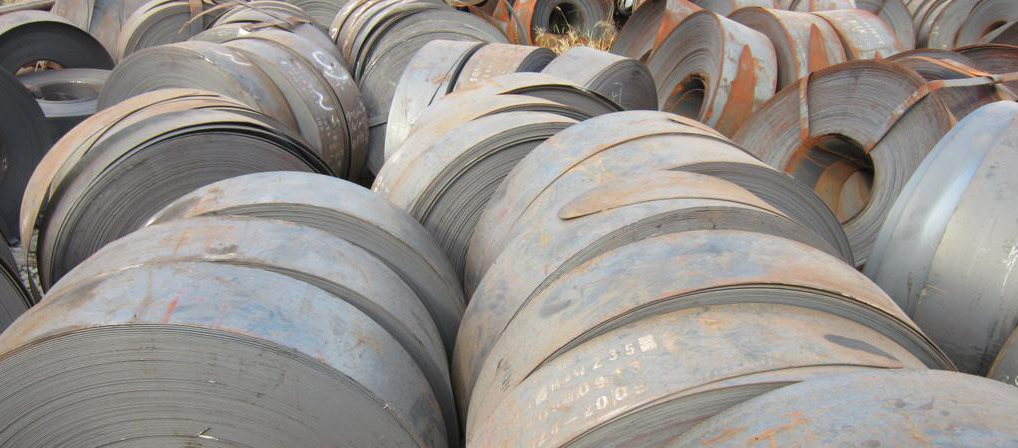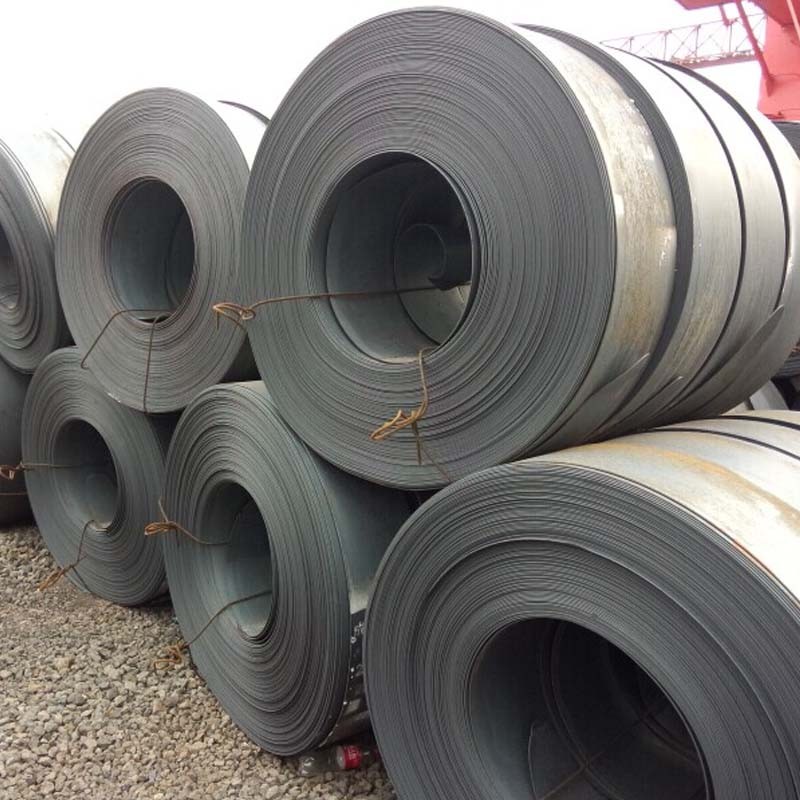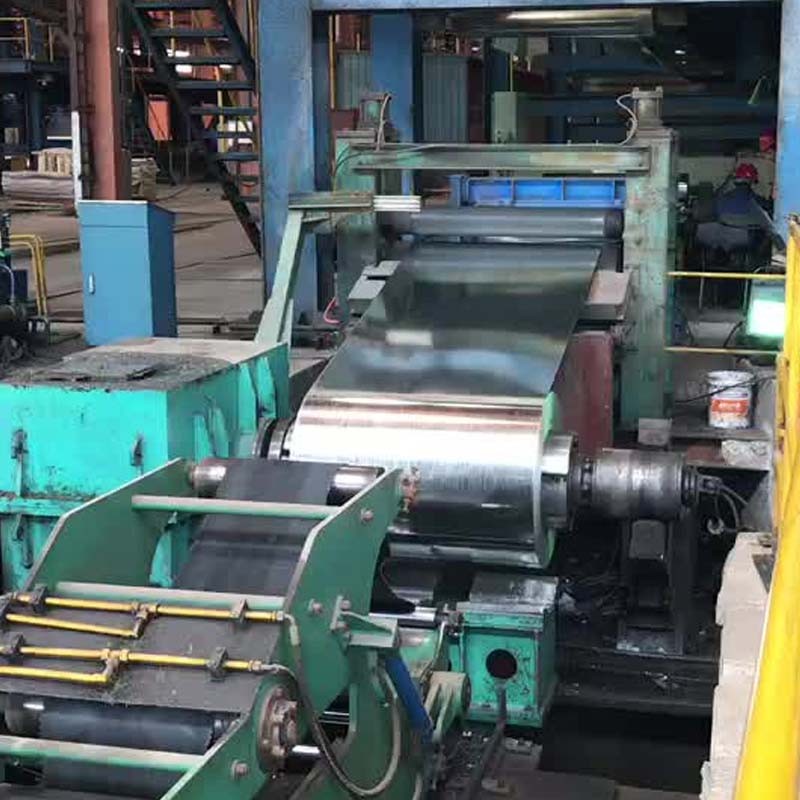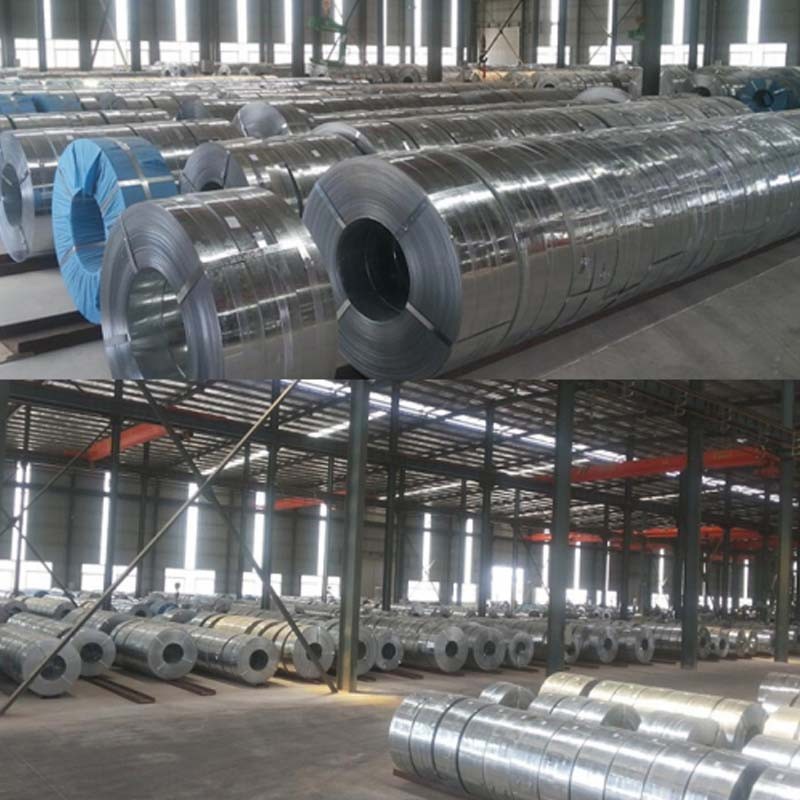Hot Rolled Steel Strip is a type of steel product that is produced by hot rolling a slab or billet of steel at a high temperature. This process involves passing the steel through a series of rolling mills to reduce its thickness and shape it into a long and narrow strip. Hot rolling ensures that the steel retains its strength and ductility, making it suitable for various industrial applications. Here's an introduction to Hot Rolled Steel Strip:
Manufacturing Process:
The production of Hot Rolled Steel Strip starts with heating a large steel slab or billet to a high temperature, typically around 1,100 to 1,300 degrees Celsius (2,012 to 2,372 degrees Fahrenheit). The heated steel is then passed through multiple rolling mills to progressively reduce its thickness. The final product is a long and continuous strip of steel with a uniform thickness.
Features and Benefits:
Strength and Ductility: Hot Rolled Steel Strip retains the inherent strength and ductility of the original steel material, making it suitable for demanding structural applications.
Cost-Effective:
The hot rolling process is efficient and cost-effective, making Hot Rolled Steel Strip a popular choice in various industries.
Versatility:
Hot Rolled Steel Strip can be easily cut, bent, and formed into different shapes, making it adaptable to a wide range of applications.
Weldability:
Hot Rolled Steel Strip exhibits good weldability, making it suitable for fabrication and welding processes in manufacturing.
Applications:
Hot Rolled Steel Strip is used in various industries and applications, including:
Automotive:for making automobile parts, chassis components, and structural reinforcements.
Construction: for building frames, supports, and other structural components.
Pipes and Tubes: for manufacturing welded and seamless steel pipes and tubes.
Machinery and Equipment: for producing machine parts and components.
Consumer Goods: for appliances, furniture, and other consumer products.
General Engineering: for a wide range of engineering applications.
It's essential to select the appropriate grade and specifications of Hot Rolled Steel Strip based on the specific requirements of each application. Additionally, surface treatments or coatings can be applied to enhance the steel strip's properties and performance in specific environments.
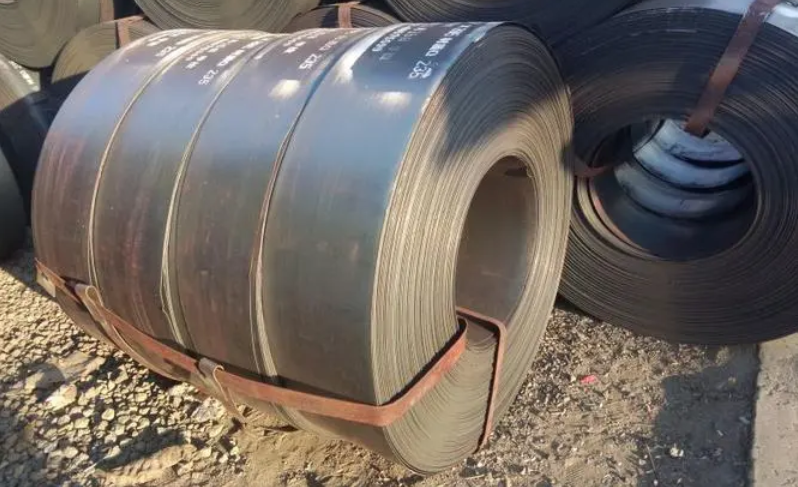
In China, the standards for Hot Rolled Steel Strip are established and maintained by the Chinese National Standards (GB/T - Guo Biao Tuijian). The relevant GB/T standard for Hot Rolled Steel Strip in China is:
GB/T 3524-2015: This Chinese National Standard specifies the technical requirements and test methods for hot-rolled carbon steel strips for welded steel tubes. It covers various dimensions and tolerances for Hot Rolled Steel Strip used in the manufacturing of welded steel tubes.
GB/T 3524 outlines the general requirements for chemical composition, mechanical properties, dimensions, and tolerances of Hot Rolled Steel Strip. This standard ensures the quality and consistency of the product, making it suitable for use in the production of welded steel tubes for various applications.
In the United States, the standards for Hot Rolled Steel Strip are set and maintained by the American Society for Testing and Materials (ASTM) and the American Iron and Steel Institute (AISI). The relevant ASTM and AISI standards for Hot Rolled Steel Strip in the US are:
ASTM A568 / A568M: This ASTM standard covers the general requirements for steel sheet in coils and cut lengths. ASTM A568 includes hot-rolled carbon, structural, high-strength low-alloy, high-strength low-alloy with improved formability, and ultra-high strength steel sheet and strip in coils. The standard specifies the various grades and designations of Hot Rolled Steel Strip and outlines the general requirements for chemical composition, mechanical properties, dimensions, and tolerances.
AISI S200: The AISI S200 North American Standard for Cold-Formed Steel Framing - General Provisions includes information on hot-rolled steel strip as one of the raw materials used in cold-formed steel framing systems.
In the United Kingdom, the standards for Hot Rolled Steel Strip are generally specified by the British Standards Institution (BSI) and European standards issued by the European Committee for Standardization (CEN). The relevant standards for Hot Rolled Steel Strip in the UK include:
BS EN 10111: This European standard specifies the requirements for continuously hot-rolled low carbon steel sheet and strip for cold forming. While not specifically designated as "Hot Rolled Steel Strip," it covers the hot-rolled material that is used for subsequent cold forming processes, including steel strip.
BS EN 10025-2: This European standard specifies the technical delivery conditions for hot-rolled non-alloy structural steel products. Although it is not specific to Hot Rolled Steel Strip, it covers a wide range of hot-rolled steel products, including strip, used in structural applications.
BS EN 10139: This European standard specifies the technical delivery conditions for cold-rolled narrow steel strip for heat treatment. While it deals with cold-rolled steel strip, it is relevant as Hot Rolled Steel Strip can be subsequently processed through cold rolling and heat treatment.
These European standards provide guidelines for the general technical requirements, dimensions, and tolerances for Hot Rolled Steel Strip and related products used in various industries. Additionally, some specific applications or industries may have their own requirements and specifications that Hot Rolled Steel Strip must meet.
In Japan, the standards for Hot Rolled Steel Strip are established and maintained by the Japanese Industrial Standards (JIS). The relevant JIS standard for Hot Rolled Steel Strip in Japan is:
JIS G 3131: This Japanese Industrial Standard specifies the hot-rolled mild steel plates, sheets, and strips for general use. It covers a wide range of dimensions and tolerances for Hot Rolled Steel Strip, which is commonly used in various industrial applications.
JIS G 3131 outlines the general requirements for chemical composition, mechanical properties, dimensions, and tolerances of Hot Rolled Steel Strip. This standard ensures the consistency and quality of the product, making it suitable for a wide range of uses in manufacturing, construction, and other industries.
The nominal thickness of the steel strip is within the range specified, any size in multiples of 0.1mm.
The nominal width of the steel strip is within the range specified, any size in multiples of 10mm.
Allowable deviation of thickness of steel strip (including continuous rolling steel plate):
Specify the minimum yield strength R. The thickness deviation of the steel strip (including continuous rolling steel plate) less than 360 MPa shall comply with the provisions. If the buyer requires higher thickness accuracy (PT.B) to supply, it should be specified in the contract, and if not specified, it should be supplied according to ordinary thickness accuracy (PT.A). According to the requirements of the buyer, the upper and lower deviations of the steel strip can be adjusted within the tolerance range specified.
Specify the minimum yield strength R. The thickness deviation of the steel strip not less than 360 MPa (including the continuous rolling steel plate) shall comply with the provisions. If the buyer requires higher thickness accuracy (PT.B) to supply, it should be specified in the contract, and if not specified, it should be supplied according to ordinary thickness accuracy (PT.A). According to the requirements of the buyer, the upper and lower deviations of the steel strip can be adjusted within the tolerance range specified.
When the yield strength and the thickness tolerance are not specified in the product standard, the thickness tolerance of the steel strip (including continuous rolling steel plate) shall be negotiated by the supplier and the buyer, and shall be specified in the contract.
Weathering steel plate, also known as corten steel or atmospheric corrosion-resistant steel, is a type of steel that gains its unique properties through the natural formation of a protective rust-like surface when exposed to the elements. This steel is designed to have enhanced weather resistance and is used in various structural and architectural applications.
